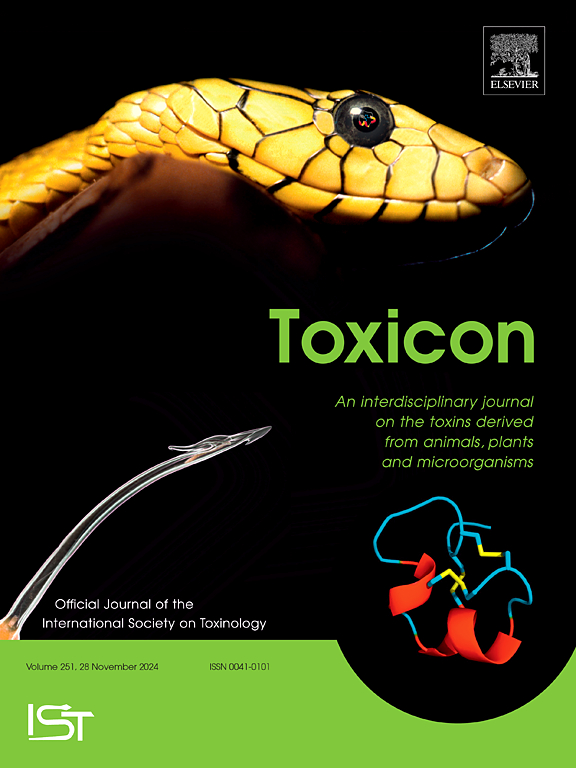Chronic pelvic pain and botulinum toxin
IF 2.6
4区 医学
Q2 PHARMACOLOGY & PHARMACY
引用次数: 0
Abstract
Botulinum toxin is being explored as a treatment for chronic pelvic pain, a major cause of suffering and disability in both women and men worldwide. For chronic pelvic pain in women, botulinum toxin may be injected into pelvic floor muscles such as levator ani and obturator internus. For pain associated with genitopelvic penetration disorders (vaginismus, vestibulitis, and vulvar pain, bulbospongioussus and ischiocavernosus may be treated. There have been numerous uncontrolled studies of botulinum toxin for chronic pelvic pain in women showing benefit, however, the few randomized controlled clinical trials published to date have given equivocal results. Chronic pelvic pain in men often implicates the prostate gland, so that the condition is commonly called “chronic prostatitis/chronic pelvic pain syndrome.” There are only a handful of clinical trials for male chronic pelvic pain, each using a different site of injection; some with promising results. This paper discusses the use of botulinum toxin in the treatment of chronic pelvic pain in men and women.
慢性盆腔疼痛和肉毒杆菌毒素。
肉毒杆菌毒素正被用于治疗慢性盆腔疼痛,这是全世界男女痛苦和残疾的主要原因。对于女性慢性盆腔疼痛,可以将肉毒杆菌毒素注射到盆底肌肉,如提肛肌和闭孔内肌。对于与生殖盆腔穿透障碍(阴道痉挛、前庭炎和外阴疼痛)相关的疼痛,可以治疗球海绵体和坐骨海绵体。有大量的非对照研究表明肉毒杆菌毒素对女性慢性盆腔疼痛有益,然而,迄今为止发表的少数随机对照临床试验给出了模棱两可的结果。男性慢性盆腔疼痛通常会累及前列腺,因此这种情况通常被称为“慢性前列腺炎/慢性盆腔疼痛综合征”。治疗男性慢性盆腔疼痛的临床试验屈指可数,每次都使用不同的注射部位;其中一些取得了可喜的成果。本文讨论了肉毒杆菌毒素在治疗慢性盆腔疼痛的男性和女性的使用。
本文章由计算机程序翻译,如有差异,请以英文原文为准。
求助全文
约1分钟内获得全文
求助全文
来源期刊

Toxicon
医学-毒理学
CiteScore
4.80
自引率
10.70%
发文量
358
审稿时长
68 days
期刊介绍:
Toxicon has an open access mirror Toxicon: X, sharing the same aims and scope, editorial team, submission system and rigorous peer review. An introductory offer Toxicon: X - full waiver of the Open Access fee.
Toxicon''s "aims and scope" are to publish:
-articles containing the results of original research on problems related to toxins derived from animals, plants and microorganisms
-papers on novel findings related to the chemical, pharmacological, toxicological, and immunological properties of natural toxins
-molecular biological studies of toxins and other genes from poisonous and venomous organisms that advance understanding of the role or function of toxins
-clinical observations on poisoning and envenoming where a new therapeutic principle has been proposed or a decidedly superior clinical result has been obtained.
-material on the use of toxins as tools in studying biological processes and material on subjects related to venom and antivenom problems.
-articles on the translational application of toxins, for example as drugs and insecticides
-epidemiological studies on envenoming or poisoning, so long as they highlight a previously unrecognised medical problem or provide insight into the prevention or medical treatment of envenoming or poisoning. Retrospective surveys of hospital records, especially those lacking species identification, will not be considered for publication. Properly designed prospective community-based surveys are strongly encouraged.
-articles describing well-known activities of venoms, such as antibacterial, anticancer, and analgesic activities of arachnid venoms, without any attempt to define the mechanism of action or purify the active component, will not be considered for publication in Toxicon.
-review articles on problems related to toxinology.
To encourage the exchange of ideas, sections of the journal may be devoted to Short Communications, Letters to the Editor and activities of the affiliated societies.
 求助内容:
求助内容: 应助结果提醒方式:
应助结果提醒方式:


